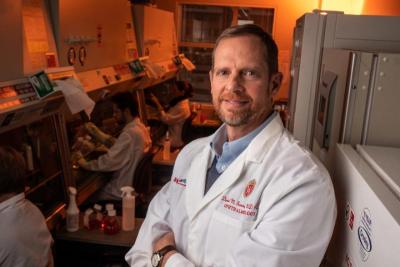
Best vitelliform macular degeneration, or Best disease, is an inherited eye condition that typically leads to blindness over the course of a few decades. The disease can be caused by more than two hundred mutations in the BEST1 gene.
The researchers were able to correct the disease in stem cells from patients with BEST1 mutations by overwhelming broken copies of the gene with many functional copies of BEST1. This approach worked for most, but not all, of the BEST1 mutations that they tested. As an alternative approach for mutations that did not respond to this gene augmentation method, the team used CRISPR-Cas9 gene editing to target and correct the mutations.